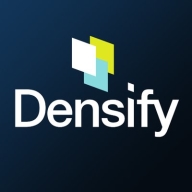

Densify and NetApp Cloud Volumes ONTAP compete in cloud management and optimization, with Densify shining in competitive pricing and strong deployment support, while NetApp stands out for comprehensive features and a substantial investment.
Features: Densify offers cloud resource optimization with cost-saving analysis and performance insights. It focuses on resource efficiency, predictive analytics, and comprehensive visibility across platforms. NetApp provides advanced data management with secure storage capabilities, seamless data backup, and robust disaster recovery options. It enhances data protection, scalability, and flexible deployment across hybrid environments.
Room for Improvement: Densify could improve its data integration flexibility and scalability in larger enterprise environments. Enhancing reporting capabilities and expanding automation features would also be beneficial. NetApp Cloud Volumes ONTAP might work on simplifying its deployment processes, reducing initial investment costs, and improving integration with third-party applications for enhanced data mobility.
Ease of Deployment and Customer Service: Densify features straightforward deployment with rapid implementation, offering efficient customer assistance. NetApp Cloud Volumes ONTAP presents a more complex deployment requiring detailed configurations, but its strong support systems facilitate setup and ongoing management.
Pricing and ROI: Densify offers an attractive pricing model with a lower initial setup cost, encouraging quicker ROI through cost insights. NetApp Cloud Volumes ONTAP requires a higher initial investment but provides long-term savings and extensive functionality, aligning with data-intensive enterprise needs.
| Product | Market Share (%) |
|---|---|
| NetApp Cloud Volumes ONTAP | 11.9% |
| Densify | 1.6% |
| Other | 86.5% |


| Company Size | Count |
|---|---|
| Small Business | 1 |
| Midsize Enterprise | 1 |
| Large Enterprise | 9 |
| Company Size | Count |
|---|---|
| Small Business | 7 |
| Midsize Enterprise | 11 |
| Large Enterprise | 53 |
Densify is a hybrid cloud and container resource management platform that makes workloads self-aware of their precise resource requirements and automates the resource management and selection process. This solution helps you control your cloud spend and also helps your apps perform and scale better. Densify enables you to match your cloud requirements with the optimal cloud supply. Additionally, Densify is the only technology that leverages patented, predictive machine learning-powered analytics to perform advanced modeling of workload patterns, and provide precise optimization directives. It is ideal for cloud engineers, container platform owners, and IT finance.
Densify works by:
Densify Features
Densify has many valuable key features. Some of the most useful ones include:
Densify Benefits
There are many benefits to implementing Densify. Some of the biggest advantages the solution offers include:
NetApp Cloud Volumes ONTAP is an efficient storage management solution for managing and storing data in the cloud. It offers seamless integration with cloud providers, advanced data replication capabilities, and high data protection. With reliable performance, it is ideal for industries like healthcare and finance.
We monitor all Cloud Migration reviews to prevent fraudulent reviews and keep review quality high. We do not post reviews by company employees or direct competitors. We validate each review for authenticity via cross-reference with LinkedIn, and personal follow-up with the reviewer when necessary.